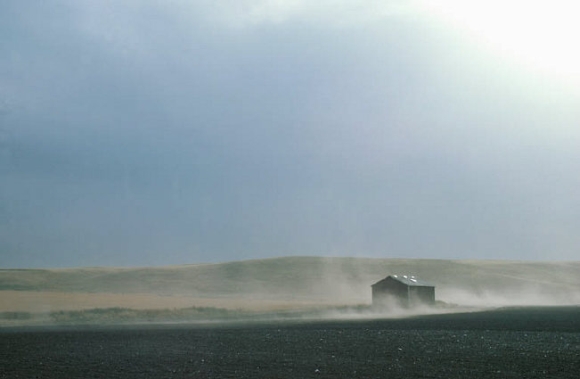To link to this article from your blog or webpage, copy and paste the url below into your blog or homepage.
Soil Loss
an article by our site
Agronomists and soil scientists argue that land is a non-renewable resource even in the context of a human time-scale. Some negative effects of degradation processes on land quality are irreversible, such as the reduction in effective rooting depth. The masking effect of improved technology provides a false sense of security. The productivity of some lands has declined by 50 percent due to soil erosion and also due to desertification.
About 11 million hectares [27.17 million acres] of arable lands are lost each year through erosion, desertification, toxification and cropland conversion to nonagricultural uses. Desertification is also destroying about 7 million hectares of grasslands each year. At this rate of destruction, we stand to lose around 40 percent of our arable lands by the year 2025.

Canyon with water and glacier erosion
Political instability can be indirectly linked with soil erosion and reduced crop yields. Environmental refugees now outnumber those fleeing political, ethnic, racial, and religious persecution and those fleeing war.
“High population density is not necessarily related to land degradation; it is what a population does to the land that determines the extent of degradation. People can be a major asset in reversing a trend towards degradation. However, they need to be healthy and politically and economically motivated to care for the land, as subsistence agriculture, poverty, and illiteracy can be important causes of land and environmental degradation.” (Source: Land Degradation: An overview, by H. Eswaran, R. Lal and P. F. Reich, Natural Resources Conservation Service of the United States Department of Agriculture)
Various natural factors can cause soil to leave a given area, such as water washing soil away (soil erosion) and wind blowing top soil (wind erosion).

Wind blowing top soil away is called wind erosion

Lost soil can cause problems in other ecosystems, entering into waterways and creating water pollution
Replacing lost soil is not enough. Lost soil can cause problems in other ecosystems, entering into waterways and creating water pollution. For example, soil containing fertilizer can cause algae blooms in streams, which can harm other organisms. Pesticides and herbicides can be especially detrimental to waterways when they are carried with the soil into bodies of water.
Types of groundcovers recommended for preventing soil erosion include lily turf, creeping Charlie, creeping thyme, scotch moss, catmint and European ginger. These plants may be considered invasive, however, and may be controlled through the use of retaining walls. And planting a flower garden or turf grass on a slope can prevent that slope from eroding.

Good, rich soil
According to The New York Times, “[responsible farming practices] enforcement is needed more than ever, environmentalists say, because high crop prices provide a strong incentive for farmers to plant as much ground as possible and to take fewer protective measures like grass buffer strips.” (Source: High Prices Sow Seeds of Erosion) According to an Environmental Working Group report, $51 billion is spent on boosting all-out production in farm states. Meanwhile, 97% of soil loss could be prevented with simple conservation measures.





